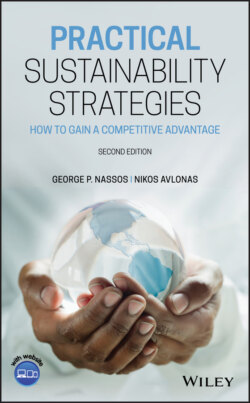Читать книгу Practical Sustainability Strategies - George P. Nassos - Страница 15
EXCEEDING THE ECOLOGICAL FOOTPRINT
ОглавлениеNear the end of World War II in 1944, the United States Coast Guard placed 29 reindeer on St. Matthew Island in the Bering Sea as an emergency food supply for the US military. This island consisted primarily of vegetation and was void of any predators. Specialists had calculated that the island could support between 13 and 18 reindeer per square mile, or a total population of between 1600 and 2300 animals.
In 1957, the population was 1350; but just six years later in 1963, the population had exploded to 6000. Were the scientists wrong in their calculations of how many reindeer the island could support?
Eventually it was determined that the original calculations had been correct. The 6000 reindeer vastly exceeded the carrying capacity of the island and they were soon decimated by disease, starvation, and extreme weather conditions. Such a drastic overshoot, however, did not lead to restabilization at a lower level with some of the reindeer dying off. Instead, the entire habitat was so damaged by the overshoot of reindeer that the number of animals fell far short of the original carry capacity. In 1966, just three years later, there were only 42 reindeer living on St. Matthew Island rather than the expected 1600–2300. The reduction was primarily due to disease and starvation.
This is an example of what could happen to the earth. In the case of St. Matthew Island, the resources used by the reindeer were grasses, trees, and shrubs, all renewable resources that can be replenished. Many of the resources necessary for human survival, however, are not renewable. There is only a finite quantity of resources such as minerals, oil, and coal. We must be cognizant of the over utilization of both renewable and non-renewable resources.
To examine this over-utilization of the earth's resources, we must look at a concept called the ecological footprint. This is a tool for measuring and analyzing human natural resource consumption and waste output within the context of nature's renewable and regenerative capacity (or bio-capacity). It represents a quantitative assessment of the biologically productive area required to produce the resources (food, energy, and materials) and to absorb the wastes of an individual or region. In terms of resources, it includes cropland, grazing land, forest, fishing grounds, and built-up land. The footprint to handle waste output includes the forests required to absorb all the carbon dioxide emissions resulting from the individual's energy consumption.
In order to be sure we don't exceed the carry capacity of the earth, the footprint for humanity must be within the annual regenerative capability of nature. Similarly, we must not exceed the absorptive capacity of the planet for the handling of the waste that is produced. A sustainable environment will exist if we live within the earth's regenerative and absorptive capacity. If we remove more from nature than can be provided indefinitely, we are on an unsustainable track.
An organization called Global Footprint Network [8] has been calculating and analyzing the ecological footprint of over 200 countries. The footprint refers to the amount of the earth's carrying capacity it takes to sustain humanity's consumption of goods and services, basically the need for food, clothing, shelter, energy, and disposal of waste. According to its calculations, in the late 1970s, humanity's collective ecological footprint breached the sustainability mark for the first time, and it has remained unsustainable ever since. In fact, the deficit for maintaining sustainability has grown every year since then, and it appears that this deficit is on a path to grow further in the foreseeable future. Currently, it is estimated that we need 1.7 earths to ensure that future generations are as well off as we are today.
It is interesting to note the variation in the ecological footprint by region or nation as seen in Table 1.1. Surprisingly, the largest footprint belongs to Qatar where it is 35.6 acres per capita. This means that for each individual living Qatar, about 36 acres are necessary to provide the consumptive and disposal needs for that person. By comparison, the footprint for the United States is 20 acres. Two additional questions that might be asked are the following: (i) is the footprint increasing with time, and (ii) how does this footprint compare with the available capacity? Growth in the ecological footprint can be attributed to an increase in population, an increase in consumption, or both. Of the Western European countries, Sweden, Belgium, Portugal, Spain, and Switzerland have increasing footprints, while Denmark and the Netherlands are making concerted efforts to reduce their footprints. The most striking result of this Ecological Footprint analysis is that if the entire world lived like the people of the United States, it would take over five planet earths to support the present world population.
TABLE 1.1 Ecological footprint for 2016
Source: Global Footprint Network.
| Country | Ecological footprint (acres per capita) |
| Qatar | 35.6 |
| Luxembourg | 31.9 |
| United States | 20.0 |
| Germany | 12.0 |
| Japan | 11.1 |
| China | 8.9 |
| World | 6.8 |
| Mexico | 6.4 |
| Egypt | 4.5 |
| Bio-capacity | 4.0 |
| India | 2.9 |
| Pakistan | 2.1 |
The value shown in bold shows what the earth generates in one year.
